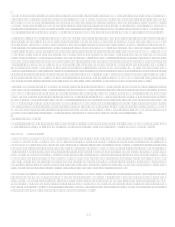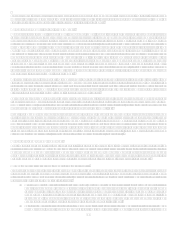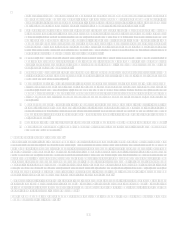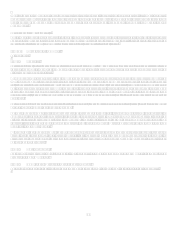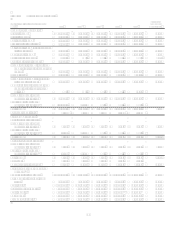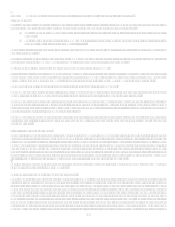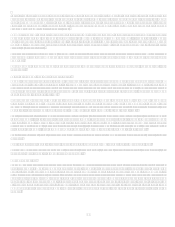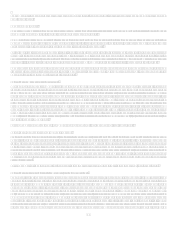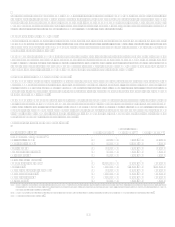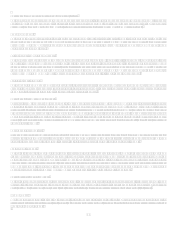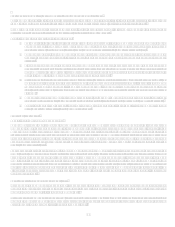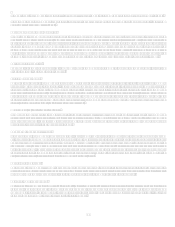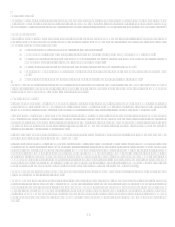Capital One 2007 Annual Report Download - page 45
Download and view the complete annual report
Please find page 45 of the 2007 Capital One annual report below. You can navigate through the pages in the report by either clicking on the pages listed below, or by using the keyword search tool below to find specific information within the annual report.23
losses, as applicable. The evaluation process for determining the adequacy of the allowance for loan and lease losses and the periodic
provisioning for estimated losses is undertaken on a quarterly basis, but may increase in frequency should conditions arise that would
require the Companys prompt attention. Conditions giving rise to such action are business combinations or other acquisitions or
dispositions of large quantities of loans, dispositions of non-performing and marginally performing loans by bulk sale or any
development which may indicate an adverse trend.
Commercial and small business loans are considered to be impaired in accordance with the provisions of Statement of Financial
Accounting Standards No. 114, Accounting by Creditors for Impairment of a Loan, (SFAS 114) when it is probable that all amounts
due in accordance with the contractual terms will not be collected. Specific allowances are determined in accordance with SFAS 114.
Impairment is measured based on the present value of the loans expected cash flows, the loans observable market price or the fair
value of the loans collateral.
For purposes of determining impairment, consumer loans are collectively evaluated as they are considered to be comprised of large
groups of smaller-balance homogeneous loans and therefore are not individually evaluated for impairment under the provisions of
SFAS 114.
As of December 31, 2007 and 2006, the balance in the allowance for loan and lease losses was $3.0 billion and $2.2 billion,
respectively.
Valuation of Goodwill and Other Intangible Assets
Goodwill and other intangible assets (primarily core deposit intangibles) reflected on the Consolidated Balance Sheets arose from
previous acquisitions. At the date of acquisition, the Company recorded the assets acquired and liabilities assumed at fair value. The
excess of cost over the fair value of the net assets acquired is recorded on the balance sheet as goodwill. The cost includes the
consideration paid and all direct costs associated with the acquisition. Indirect costs relating to the acquisition are expensed when
incurred based on the nature of the item.
In accordance with the requirements specified in Statement of Financial Accounting Standards No. 142, Goodwill and Other
Intangible Assets, goodwill must be allocated to reporting units and tested for impairment. The Company tests goodwill for
impairment at least annually or more frequently if events or circumstances such as adverse changes in the business indicate that there
may be justification for conducting an interim test. Impairment testing is performed at the reporting unit level.
The first part of the test is a comparison at the reporting unit level, of the fair value of each reporting unit to its carrying amount,
including goodwill. If the fair value is less than the carrying amount, then the second part of the test is needed to measure the amount
of potential goodwill impairment. The implied fair value of the reporting unit goodwill is calculated and compared to the actual
carrying amount of goodwill recorded within the reporting unit. If the carrying amount of reporting unit goodwill exceeds the implied
fair value of that goodwill, then the Company would recognize an impairment charge for the amount of the difference.
The fair values of reporting units are determined primarily using discounted cash flow models based on each reporting units internal
forecasts.
Other intangible assets having finite useful lives are separately recognized and amortized over their estimated useful lives.
As of December 31, 2007 and 2006, goodwill of $12.8 billion and $13.6 billion and net intangibles of $1.1 billion and $1.3 billion,
respectively, were included in the Consolidated Balance Sheet.
Revenue Recognition
The Company recognizes earned finance charges and fee income on credit card loans according to the contractual provisions of the
credit arrangements. When the Company does not expect full payment of finance charges and fees, it does not accrue the estimated
uncollectible portion as income (hereafter the suppression amount). To calculate the suppression amount, the Company first
estimates the uncollectible portion of credit card finance charge and fee receivables using a formula based on an estimate of future
non-principal losses. This formula is consistent with that used to estimate the allowance related to expected principal losses on
reported loans. The suppression amount is calculated by adding any current period change in the estimate of the uncollectible portion
of finance charge and fee receivables to the amount of finance charges and fees charged-off (net of recoveries) during the period. The
Company subtracts the suppression amount from the total finance charges and fees billed during the period to arrive at total reported
revenue.


